#hunting upland birds
Explore tagged Tumblr posts
Text




I also acquired a new hunting dog book and atlas book!
Game Dog: The Hunter's Retriever for Upland Birds and Waterfowl, by Richard A. Walter's. Originally published 1983, second edition published 1995
Goode's World Atlas, from Rand McNally, edited by Edward B. Espenshade Jr and John C. Hudson, with senior consultant Joel L. Morrison. Originally published 1922, 19th edition published 1995
#i see atlas books fairly often at work but dont get them#but THIS ONE i was showing to a regular where laika come from#and accidentally flipped to the LANGUAGE MAP SO COOL OH YEAH WHAT instead of the normal northern eurasia map#and idk if thats a normal thing to find in these books or not; ive never checked but will be now#but i decided Right Then that i needed This Book#so i got it lol#anyways#my library#hunting book#hunting#hunting dog#hunting dog book#dog book#maps#map book#game dog: the hunters retriever for upland birds and waterfowl#labrador retriever#field bred lab#richard a wolters#rand mcnally#goode's world atlas#atlas#edward b espenshade#john c hudson#joel l morrison#1995#1990s
5 notes
·
View notes
Text
I know that ppl get up in arms abt stuff like this sometimes but whenever I look at a woodcock I'm like. I want to eat that animal.
#anyway i think that acknowledging that living animals have to die in order for you to eat them#is better than people who are so alienated from the realities of food production that they only think of meat as something that comes#wrapped in plastic from the grocery store#i havent had a game bird of any kind since i was a kid#and my brother has been getting into upland bird hunting so its been on my mind#i also have a hankering to try duck which. i can just get from the store.#so i might find a recipe#txt
6 notes
·
View notes
Text
Boundary Waters Canoe Area Wilderness clarifies dog leash rules
New Post has been published on https://petn.ws/X7QX6
Boundary Waters Canoe Area Wilderness clarifies dog leash rules
Duluth, Minn. — The U.S. Forest Service added new language to Boundary Waters Canoe Area Wilderness permitting last spring, indicating that dogs must be on a leash of 6 feet or less while in developed recreation sites. The change raised questions about whether the rule applies during bird-hunting seasons, when most dogs are off-leash trying […]
See full article at https://petn.ws/X7QX6 #DogNews #Hunting, #Minnesota, #UplandBirds, #Waterfowl
0 notes
Text
0 notes
Text
Government drones deactivated

0 notes
Note
Ok, im back with more names. The bog was hard to find, so I’m basing it off of the area of Carrington Moss, which is in the area I think BB takes place if I’m reading the maps right
Also bc we’re talking about Shadowclan
Ok, so the names
First of all: Fen, Bog, Mire, and Peat, all names for this biome. There’s also marls, a rock found in the area
Again, I’ll only be using names I don’t remember being in the series (the obvious one being moss. It’s all moss)
Asphodel (bog asphodel), rosemary (bog rosemary), cranberry, cotton (cotton sedge), blackberry, bluebell, foxglove, iris, a plant called Mad-dog weed, also known as a water-plantain, admiral (red admiral), pipit (meadow pipit), partridge (gray partridge, but very rare) bullfinch, and bunting (reed bunting)
Close but you're a bit off-- Carrington Moss is, confusingly, an example of a moorland!
Specifically it is a lowland peat bog. Upland peat, lowland peat, blanket bog, dune heath, upland heath, lowland heath, maritime heath... all of these biomes are completely different, but all of them are referred to as moorlands.
Also, those names for the biome are not interchangeable. Those all have more specific meanings;
Fen: An alkaline wetland. Fed by fresh groundwater or runoff, these biomes are a lot richer in nutrients and the water is higher in oxygen. Because of this, they often have a much larger diversity of plant and animal species. Fens can sometimes become bogs over time.
Bog: An acidic wetland Thick moss, lots of dead matter, mostly a result of still water building up over many many years. Since the water is low in oxygen, you won't find many fish in these, and generally bogs are home to specialists who can handle the conditions.
Mire: Wet, muddy land that's hard to walk on Only synonymous with "bog" if you're using it in the informal sense of "being bogged down," not in the ecological sense-- a bog is a mire, but not all mires are bogs. You could have a mire made out of glue, tar, or caramel, if you were writing a really cool fantasy series.
Peat: A dark brown material formed from partially decayed plant matter. Essentially what happens when the top layer of moss or grass dies in a really wet place, is quickly grown-over by living plants, and then rots slowly underneath. A VERY important component of a bog, extremely useful as fuel.
For ShadowClan I'm actually modelling wetlands in and around Delamere Forest, specifically, because I ran into the issue you did of the British-English dialect having a lot of "overlap" in region names and scientific terms. If you want to go scouring for cool prefixes to suggest, you can check out Blakemere Moss, Black Lake, Mouldsworth Gap, and Abbots Moss.
Most of the plants you mentioned still grow here, though! Some other fun prefixes I've been thinking of though;
Lime (type of tree, no relation to citrus!)
Linden (another name for lime, which there are two types of)
Sphagnum (Important type of moss)
Snipe (type of bird that picks up its babies and flies away with them)
Coot (funny name bird)
Chaser (type of dragonfly)
Podzol (ashy soil found in places where plant decomposition is inhibited)
Quiver or Quake (Describing the movement of thick moss that has formed over the surface of stillwater, Q is a really rare letter in WC names)
Vetch (Common type of plant with a name I think is really cool)
Nymph (Baby dragonfly)
Skater, Skimmer, or Strider (Bug that hunts by gliding across the surface of water)
#prefixes#wetlands#One of my buddies is an ecologist who's extremely knowledgeable on wetlands#I'm consulting them a lot on ShadowClan's territory
87 notes
·
View notes
Text
Hungarian Partridge, Wyoming - Day 3: The Journey Within - A Bird Hunter's Diary | Mark V Peterson
MarkPeterson #TheJourneyWithin #WTA In Part 3, Day 3, Mark Peterson wraps up his time in Wyoming upland hunting with an … source

View On WordPress
#a bird hunter&039;s diary#bird dog#blue grouse#Gundog#hun hunt#Hungarian partridge#Hungarian partridge hunt#Hunt#hunting#hunting huns#hunting upland birds#Mark Peterson#mark v peterson#partridge#Sage grouse#The Journey Within#The Journey Within - A Bird Hunter&039;s Diary | Part 1: Himalayan Snowcock#upland bird hunting#upland birds#upland hunting#upland slam#wyoming#wyoming bird hunting
1 note
·
View note
Text
Birds of Maglor’s Gap and Lothlann
This completes my series on birds of the Fëanorian realms pre Amon Ereb!!
March of Maedhros, Himlad, Thargelion, Estolad
Flora, Fauna, geography and environment of Arda Masterlist
Maglor’s Gap was the widest break in the mountains and cliffs dividing Beleriand and the lands to the north. It lay between the blue mountains to the east and the March of Maedhros to the west. Lothlann was a wide expanse of plains to the north of the Gap. The rivers greater and little Gelion ran around the western and eastern borders.
Steppes and plains: Daurian, see see partridge, yellowhammer, black grouse, grey necked bunting, great rosefinch, imperial Eagle, steppe eagle, golden eagle, Mongolian ground jay (rare), greater short toed lark, upland buzzard, Pallas’s sandgrouse, laughing dove, great bustard, bush quail, gray, black and painted francolin, snowcock, little bustard, merlin, cheer pheasant, crested lark, painted sandgrouse, scrubfowl, common quail, brown accentor, ring necked pheasant, grey partridge, black bellied sandgrouse, common buzzard, black kite
By greater and little Gelion (stream/river): black faced bunting, Pallas’s bunting, pin tailed sandgrouse (summer only), white throated dipper, brown dipper, common kingfisher, hobby, swamphen
World building notes
--Laughing doves appear on the sigil of some of Maglor’s host who are particularly skilled in the use of song in battle
-Many of Maglor’s cavalry hunt or fight with birds including golden, steppe and imperial eagles.
-Game birds of the prairie steppes such as partridge make up much of the meat that the cavalry and scouts eat, along with hares.
-Most of the cavalry have horse hair plumes but some of the lieutenants and generals have feathers from pheasants or eagles.
-Emu are actually domesticated in some parts of the world and I love the idea of them being kept in both the Gap and Himlad as well as by peoples East of the Ered Luin. They have a huge variety of uses including leather, oil, eggs and meat. And the chicks are very cute 💙
-I am a huge proponent of prehistoric and extinct animals living throughout Arda, as per Tolkien’s comments about “all creatures which walk or have walked the earth”. I really like the idea of small brush moas living near the mountain borders of the Gap
31 notes
·
View notes
Text
Excerpt from this press release from the Department of the Interior:
The Department of the Interior announced that more than $46.2 million in grants was approved by the Migratory Bird Conservation Commission today, which will conserve or restore 91,425 acres of wetland and associated upland habitats for waterfowl, shorebirds and other birds in 17 states. These grants, made through the North American Wetlands Conservation Act (NAWCA), will be matched by more than $99.1 million in partner funds.
In addition, the Commission approved more than $11.7 million from the Migratory Bird Conservation Fund, providing the U.S. Fish and Wildlife Service and its partners the ability to conserve habitat on seven national wildlife refuges across seven states. The acquisitions will expand public opportunities for hunting, fishing, wildlife observation and outdoor recreational access.
The Migratory Bird Conservation Commission is chaired by the Secretary of the Interior and authorized under NAWCA. The Commission has helped conserve much of the nation’s most important waterfowl habitat and establish or enhance many of the country’s most popular destinations for waterfowl hunting and birding.
“Across the country, migratory birds and their habitat are at risk due to drought, warmer temperatures and rising seas, said Service Director Martha Williams. “Projects supported through these grants help bolster wetland biodiversity and increase habitat for billions of migrating birds while expanding outdoor recreation opportunities for surrounding communities.”
North American Wetlands Conservation Act
NAWCA is the only federal grant program dedicated to the conservation of wetland habitats for migratory birds. Since 1991, over 7,000 partners have received more than $2.28 billion in grants for roughly 3,300 projects. Those partners have contributed another $4.53 billion in matching funds to improve more than 32.6 million acres of habitat, totaling more than $6.8 billion for wetland conservation that also benefits people, birds and other wildlife. Through NAWCA, federal funds are typically leveraged at twice the legally required dollar-for-dollar match ratio. Partners in NAWCA projects include private landowners, state, Tribal and local governments, conservation organizations, sporting groups, land trusts and corporations.
The Commission also received a report today on 22 NAWCA small grants, which were approved by the North American Wetlands Conservation Council in March 2024. Small grants are awarded for projects up to $250,000 to encourage new grantees and partners to carry out smaller-scale conservation work. The Commission has authorized the Council to approve these projects up to $5 million. This year, more than $4.7 million in grants was matched by more than $10 million in partner funds.
7 notes
·
View notes
Text
The Tapayuna, also known as Beico or Beiço-de-Pau (a Portuguese exonym referencing traditional lip plugs), are an Indigenous group of Brazil belonging to the larger Arawakan linguistic family. Historically inhabiting the transitional zones between the Amazon rainforest and the Brazilian Cerrado, the Tapayuna have experienced significant social, territorial, and demographic transformations, particularly during the 20th century due to external pressures from colonization, state intervention, and infrastructural development. Despite periods of cultural suppression and population decline, the Tapayuna people have demonstrated resilience and have worked toward the revitalization of their language and cultural traditions in recent decades.
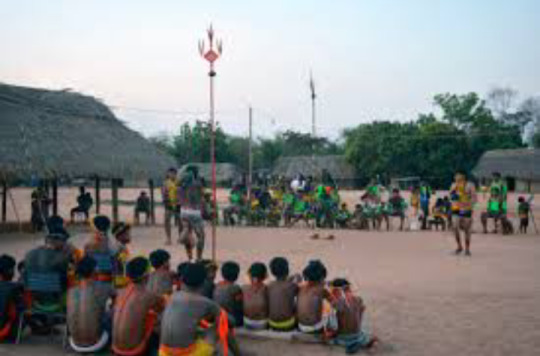
The autonym Tapayuna is the preferred designation used by the group themselves. The alternative name "Beico" or "Beiço-de-Pau" was imposed by outsiders, referring to the traditional use of wooden lip plugs among Tapayuna men—an aesthetic and cultural practice that was stigmatized during the mid-20th century. As with many Indigenous groups, externally imposed names often reflect colonial perspectives, whereas the autonym is rooted in self-identification and carries cultural significance. The term "Tapayuna" is Arawakan in origin and linguistically reflects internal phonological patterns common to the family.
The Tapayuna language is part of the Northern branch of the Arawakan language family, which is one of the largest and most widespread Indigenous language families in South America. The Tapayuna language, like many others in this family, is polysynthetic, with complex morphology and verb serialization. As of the early 21st century, the language was considered moribund, with only a small number of fluent elderly speakers remaining, primarily in the state of Mato Grosso. Language shift toward Portuguese occurred largely due to contact with non-Indigenous society, missionary influence, and state educational policies.
Efforts in linguistic revitalization have been made, supported by partnerships between Indigenous leaders, linguists, and non-governmental organizations. Documentation projects have included the recording of oral traditions, grammar sketching, dictionary development, and the creation of bilingual pedagogical materials.
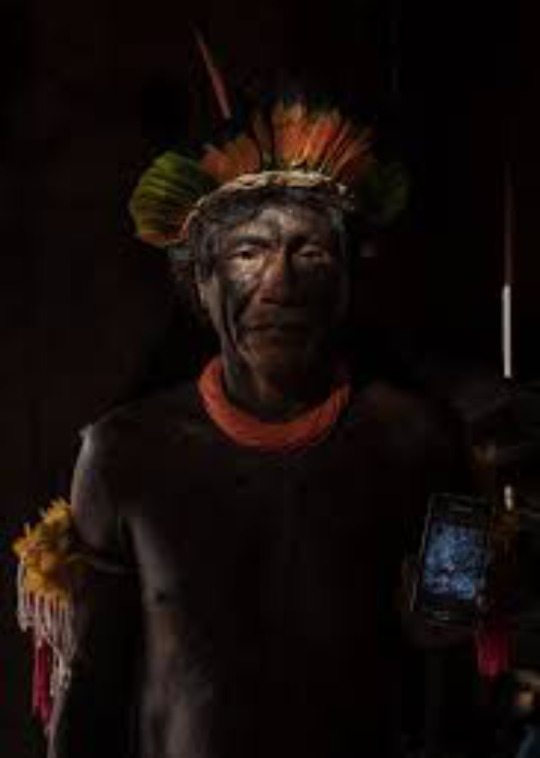
Historically, the Tapayuna occupied a region along the Arinos and Teles Pires Rivers in what is today northern Mato Grosso, Brazil. This region forms a biome transition zone between the Amazon rainforest and the Cerrado savanna, characterized by high biodiversity and ecological complexity. The original territory included seasonal floodplains, gallery forests, and upland savannas, which supported a mixed subsistence economy based on hunting, fishing, horticulture, and gathering.
In the 20th century, Tapayuna territory was heavily encroached upon due to the expansion of Brazilian agriculture, infrastructure projects (notably highways and hydroelectric dams), and governmental assimilation policies. Forced removals and displacement significantly altered their relationship with the land, leading to resettlement in demarcated Indigenous territories such as the Xingu Indigenous Park and later in other demarcated areas in Mato Grosso.
Traditionally, the Tapayuna practiced a diversified subsistence economy combining slash-and-burn horticulture with hunting, fishing, and foraging. Primary crops included manioc (cassava), maize, bananas, and a variety of tubers and fruits, cultivated in rotational plots known as roças. Hunting, carried out using bows and arrows and traps, targeted forest and savanna game such as peccaries, tapirs, monkeys, and various bird species. Fishing was carried out with nets, weirs, and occasionally plant toxins (fish poisons).
Craft production was both utilitarian and ceremonial: men crafted weapons, tools, and ornaments such as lip plugs and feather headdresses; women wove baskets and mats using natural fibers. The Tapayuna were historically semi-nomadic within their territory, relocating seasonally to optimize resource use, and maintained a reciprocal economy within kinship networks.
Today, while some traditional practices continue, many Tapayuna have integrated into the cash economy through artisanal sales, state support programs, and collaboration with NGOs. Shifts in diet, material culture, and labor have occurred, but subsistence farming and food sovereignty remain vital to cultural identity.
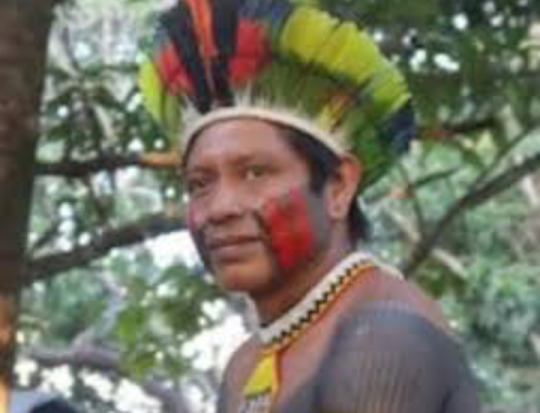
The Tapayuna social structure was historically organized around extended kinship groups and clans, each with specific roles and totemic associations. Kinship was bilateral, though patrilineal tendencies influenced inheritance and residence patterns. Marriages were often exogamous between clans, with bride service and other customary exchanges marking marital alliances. Chiefs or headmen (caciques) traditionally held authority based on age, wisdom, and oratorical skill, rather than coercive power.
Rites of passage marked transitions in age and social status, particularly male initiation, which involved seclusion, instruction in cosmological knowledge, and body modification practices such as the insertion of lip plugs and tattooing. These rites reinforced communal identity and social cohesion.
In contemporary contexts, formal Indigenous associations and leadership structures have emerged, interacting with Brazilian state mechanisms. Nevertheless, traditional authority figures remain important, particularly in cultural transmission and dispute resolution.
Tapayuna cosmology is deeply rooted in Arawakan shamanic traditions, emphasizing a multi-layered universe inhabited by a diverse array of spirits, ancestral beings, and natural forces. Shamans (called by local names, often translated as pajés in Portuguese) acted as mediators between the human and spiritual realms, conducting healing rituals, divinations, and protective ceremonies.
Myths explain the origins of the world, human beings, animals, and cultural practices. These narratives are preserved through oral tradition and are often recited during communal gatherings. Certain animals, such as jaguars and anacondas, are imbued with spiritual significance and feature prominently in Tapayuna stories as ancestors or transformative beings.
Although many Tapayuna have been exposed to Christianity through missionary efforts—particularly in the mid-20th century—traditional cosmologies remain influential, and syncretism is common.
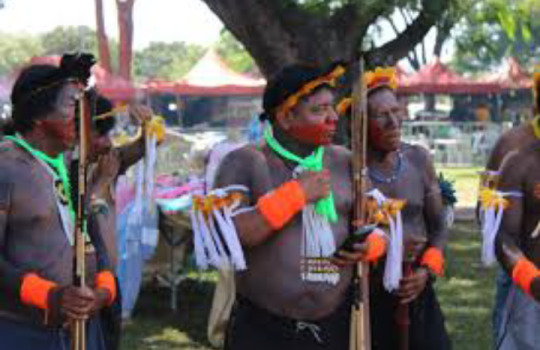
The Tapayuna were relatively isolated until the mid-20th century. In the 1960s and 70s, they experienced catastrophic population decline due to diseases introduced during "pacification" missions conducted by the Brazilian state through the Indigenous Protection Service (SPI) and later the National Indian Foundation (FUNAI). Malaria, measles, and influenza ravaged populations with no prior immunity.
Survivors were relocated to the Xingu Indigenous Park, a multiethnic reserve established in 1961 under the Villas-Bôas brothers. There, the Tapayuna came into contact with other Indigenous groups such as the Kuikuro, Waurá, and Kayabi, leading to both cultural exchange and challenges of intergroup relations. The relocation was traumatic and resulted in a temporary suppression of Tapayuna identity due to stigmatization and pressure to assimilate.
In later years, surviving Tapayuna communities negotiated for the right to return to their ancestral lands and were granted access to new Indigenous territories in Mato Grosso. Demographic recovery has been slow but positive, supported by improved healthcare, education, and territorial rights enforcement.
Today, the Tapayuna continue to navigate a complex relationship with the Brazilian state, neighboring communities, and wider society. Legal recognition of land rights remains a central issue, as does the protection of environmental resources from illegal logging, land-grabbing, and agribusiness expansion. Cultural revitalization has become a key goal, particularly the teaching of the Tapayuna language to children, the revival of traditional festivals, and the assertion of cultural pride.
Educational initiatives include bilingual schooling, where possible, and workshops conducted with elders to pass on oral traditions. Political activism has increased, with Tapayuna representatives participating in national Indigenous congresses and advocacy networks.
The group remains small in number, but resilient and increasingly visible in public discourse surrounding Indigenous rights, Amazonian conservation, and cultural preservation.
#indigenous peoples#tapayuna#arawakan#indigenous brazil#cultural revitalization#language preservation#endangered languages#amazon indigenous#indigenous resistance#decolonize#indigenous rights#native voices#brazilian indigenous#protect the amazon#cultural heritage#ethnolinguistics#indigenous history#indigenous knowledge#indigenous culture#indigenous resilience#anthropology#colonial history#xingu park#indigenous revival#traditional ecological knowledge#land back#indigenous art#survivance#lip plug culture#post colonial voices
2 notes
·
View notes
Text



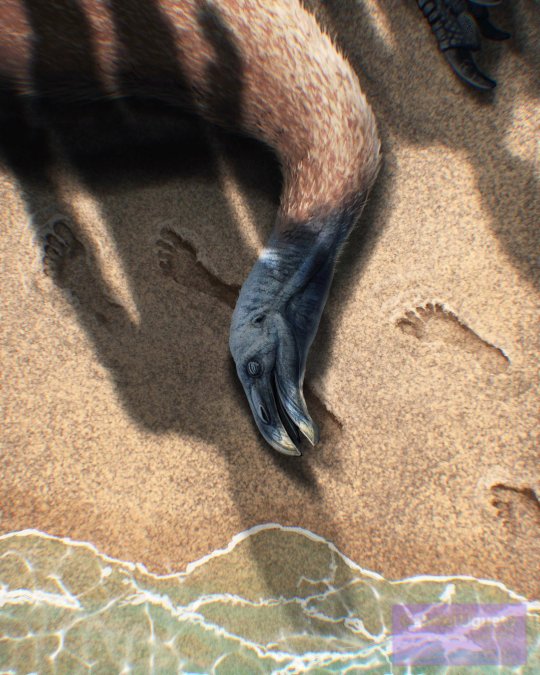

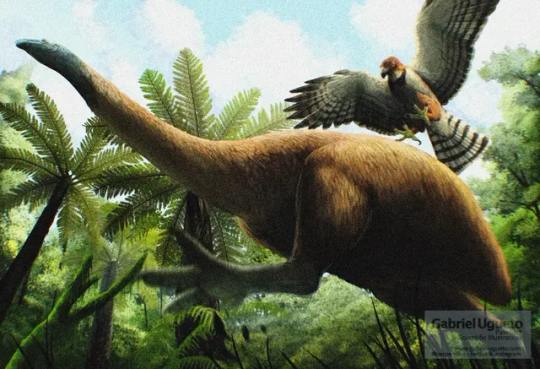
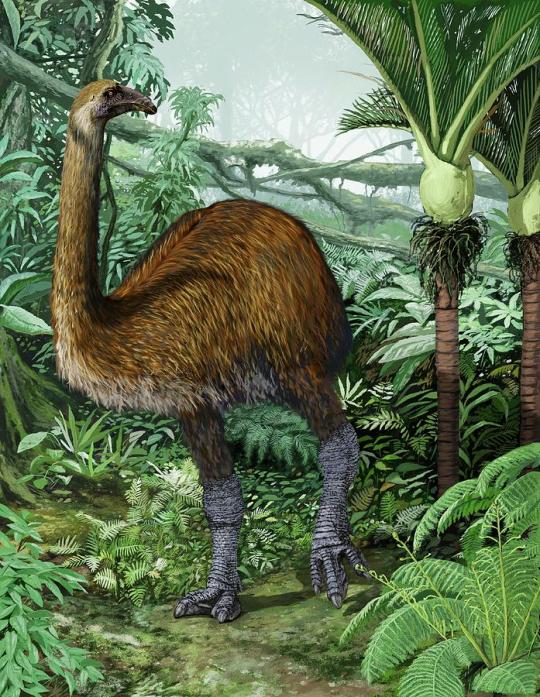
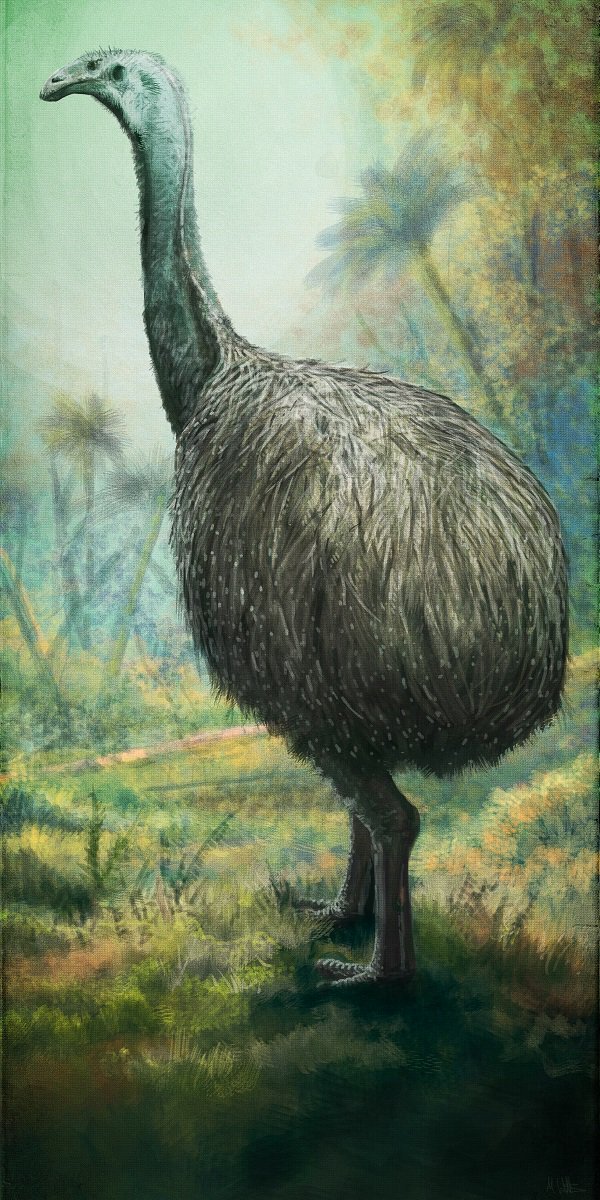
Dinornis better known as the Giant Moa is an extinct genus of birds belonging to the moa family of the suborder order Dinornithiformes, a group of large flightless birds which lived on the islands of New Zealand some 2 million to 500 years ago. There are 2 currently recognized species the North Island giant moa (Dinornis novaezealandiae) and the South Island giant moa (Dinornis robustus). These diurnal avians tended to be found in the lowlands of there island homes inhabiting Shrublands, Grasslands, Coastlands, and Forests where they occupied the niche of large terrestrial browsing herbivore similar to certain antelope, bovines, cervids, and giraffes of today, feeding upon Twigs, seeds, berries, leaves, flowers, fungi, vines, herbs, and shrubs. In life giant moas displayed a large reversed sexual dimorphism whereby the females were up to twice the size of males. With males reaching around 5 to 6.5ft (1.52 to 1.98m) in height and 120 to 195 (55 to 88kg) in weight, and females reaching roughly 10 to 12.5ft (3.05 to 3.81m) in height and 170 to 550lbs (78 to 250kgs) in weight these birds where amongst the largest to ever exist, with the North Island Giant Moa currently holding the record of the tallest bird ever and the South Island Giant Moa being the second tallest. However both are beaten in terms of weight by there fellow recently extinct ratite the elephant bird. Dinornis had long slim, elongated bones compared to other moa species, Maori historical accounts describe the animals as tall, two legged, tailess, wingless giants with slender necks. Brown, slightly streaked, downy, wool like feathers covered all of there bodies sans there heads, feet, and part of the neck. It is believed that the settlement of New Zealand by the Maori directly lead to the Moas extinction, as they were extensively hunted for there meat and feathers. Whats possibly more devastating was the introduction of Polynesian rats and dogs which likely destroyed moa nests and killed moa chicks faster than these large birds could mature and reproduce.The last of the giant moa likely died out around 1500 C.E. with the last species of smaller Moa the Upland Moa possibly holding out until the 1800s.
Art used belongs to the following creators:
Giova Favazzi
Mark Witton
Jaime Chirinos
Gabriel N. U.
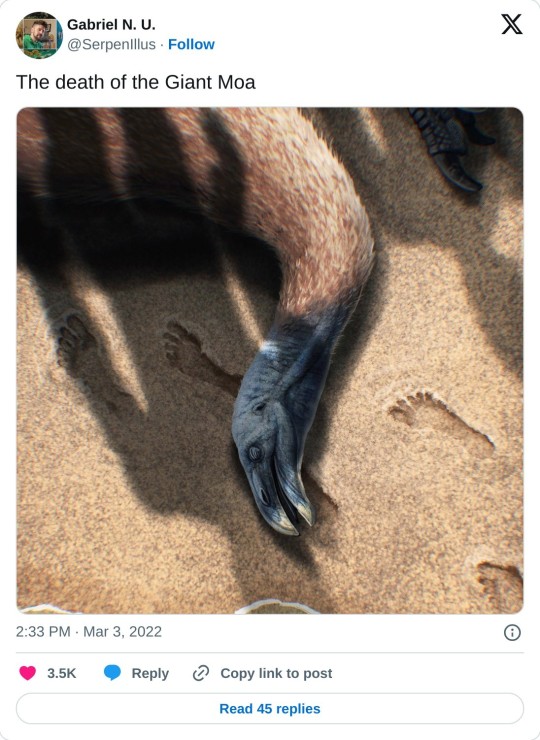
Dana Franklin
#pleistocene pride#pleistocene#pliestocene pride#cenozoic#ice age#stone age#pliestocene#bird#dinosaur#giant moa#moa#new zealand#extinct
14 notes
·
View notes
Text
Democrat vice presidential nominee Tim Walz found himself in an unexpected spotlight after a video surfaced online that shows the “folksy” Minnesota governor struggling to use a shotgun.
The video was captured during a pheasant-hunting trip, the Daily Caller reported.
The footage shows Walz attempting to load a semi-automatic firearm, leading to a wave of discussion among the public and media.
During the governor’s Pheasant Hunting Opener in Sleepy Eye, Minnesota, Walz’s difficulty with a Beretta A400 shotgun drew attention.
It comes amid renewed interest in his military service and criticisms from political opponents.
According to reports from the Associated Press, the annual Governor’s Pheasant Hunting Opener is a traditional event meant to launch the upland game bird season.
This year, the gathering took on an extra layer of intrigue as the governor’s handling of the firearm took center stage.
In the video, Walz is seen conversing with reporters while attempting to load shells into the gun’s magazine.
The governor identified the shotgun as a Beretta A400, which he had purchased during a period when he was more actively involved in trap shooting.
2 notes
·
View notes
Text
The Philippine Eagle, a unique bird of prey found only in the Philippines, is a true forest raptor that relies on pristine primary forests for hunting, nest building, and raising its young.
POPULATION STATUS: Critically Endangered
BODY LENGTH: 2.5-3.3 feet (76-102 cm)
WINGSPAN: 6.5 feet (1.9 m)
WEIGHT: 10-18 pounds (4.5-8.1 kg)
Despite its large size and striking appearance, the eagle is being threatened by habitat loss due to logging and the conversion of forest land into agricultural fields. As a result, it has been restricted to mountain slopes, which are less at risk.
The eagle is diurnal, hunting, flying, building nests, and participating in courtship activities during daytime hours. The forest is the only home for the Great Philippine Eagle. It is where they obtain food, reproduce, and nourish their offspring. Unfortunately, illegal logging and irresponsible use of resources have resulted to the disappearance of their forest habitat that brings deathly consequences to the species.
The Philippine Eagle is one of the most endangered raptors globally due to habitat loss due to the island nation's unique characteristics. This has led to problems for adult eagles, who lose nesting trees and prey to chainsaws and bulldozers, and young birds, who must find new places to live and settle down.
This rare and majestic bird species can be found nowhere else but in the Philippines. Losing the species to extinction would also mean the world losing a precious biological heritage. Ensuring the safety of the Philippine eagle population in the upland areas can result to additional source of income for the marginalized communities sharing the forest with the eagles through our biodiversity-friendly initiatives.
Sources:
The Peregrine Fund
The Philippine Eagle Foundation
#kammu_appan_i_Endangered_Animals_nu_madim_kaya_mefuku.
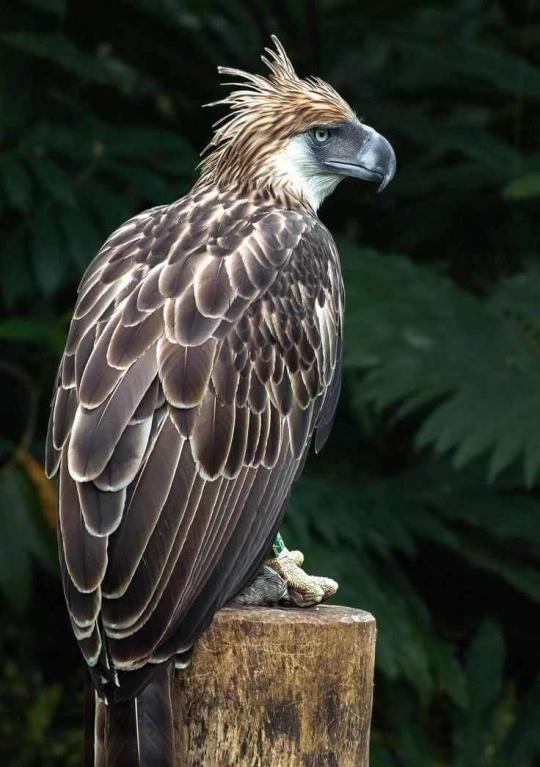
12 notes
·
View notes
Video
youtube
📍 Mastering Wildlife Identification: The Key to Ethical and Responsible Hunting in Canada
As a hunter, one of your most important responsibilities is accurately identifying wildlife species. Game species are grouped into four general categories: Big Game , Small Game , Upland Game Birds , and Migratory Birds . Knowing the differences between species—and even within species—is essential to ensuring ethical and legal hunting practices. Let’s break down everything you need to know about wildlife identification, bag limits, and how BC Firearms Academy can help you prepare for your CORE Hunting exam with free study materials and expert training.
📍 What You’ll Learn in This Video
0:00 - Introduction : Why wildlife identification matters for hunters.
0:03 - Game Species Categories : Big Game, Small Game, Upland Game Birds, and Migratory Birds.
0:15 - Legal Seasons and Bag Limits : Understanding Wildlife Management Units and regulations.
0:30 - Identifying Wildlife : From easy-to-spot species to challenging “on the wing” waterfowl ID.
0:45 - Free Study Materials : Links to BC Firearms Academy’s CORE Hunting resources.
1:00 - Call to Action : Start your CORE Hunting education today!
📍 Game Species Categories
Wildlife species fall into four main categories:
Big Game : Includes deer, moose, bear, and other large animals.
Small Game : Think hare, rabbit, squirrel, and similar species.
Upland Game Birds : Grouse, wild turkey, and others fall into this category.
Migratory Birds (Waterfowl) : Ducks, geese, and other migratory birds are regulated under specific guidelines.
Each category has its own open seasons and bag limits , which are outlined in the BC Hunting Regulations Summary by Wildlife Management Units.
📍 Legal Seasons and Bag Limits
Hunters must adhere to strict regulations to ensure sustainable wildlife populations:
Some species are protected and cannot be hunted at all.
Others are classified as game animals or birds and may only be hunted during their designated legal seasons .
Bag limits vary by species—knowing these limits is critical to staying compliant.
For example:
You may take five mallards daily but only one black duck .
Distinguishing between male toms and non-bearded hens in wild turkeys is essential to avoid illegal harvests.
These rules exist to protect wildlife and maintain healthy ecosystems for future generations.
📍 Identifying Wildlife
Identifying wildlife accurately can be tricky, especially for species that look similar:
White-tailed deer and moose are easy to recognize, but hunters must also distinguish between calves and adults to avoid harvesting young animals.
Waterfowl identification is particularly challenging—you must identify species “on the wing” to ensure compliance with bag limits.
Practice makes perfect! Use study guides and quizzes to sharpen your skills before heading into the field.
📍 Free Study Materials from BC Firearms Academy
At BC Firearms Academy , we’re here to help you succeed on your CORE Hunting exam and become a confident, responsible hunter:
Free Online Study Materials : Prep for your exam with our comprehensive resources:
In-Person CORE Hunting Courses : Hands-on training to reinforce your knowledge.
CORE Hunting Exam Challenges : Test your skills and build confidence with practical exercises.
BC Hunting Exam Chapter Quizzes
Fun Hunting Quizzes for Core Hunter Education
Frequently Asked Questions and Study Guide
CORE Hunter Education Study Guide Course
Whether you’re new to hunting or brushing up on your knowledge, we’ve got the tools and resources you need to succeed.
👉 📍 Start Your CORE Hunting Education Today! Ready to take the next step toward becoming a responsible and ethical hunter? Visit us at www.bcfirearmsacademy.ca to access free study materials, sign up for courses, or book your assessments.
🎯 Tag a friend who loves hunting—it’s time to spread awareness about safe and responsible wildlife identification.
🔥 Subscribe to our channel for more tips, tutorials, and expert advice on hunting, firearms safety, and training. Together, let’s promote safe and responsible hunting practices—one step at a time. 🍁🔫
0 notes
Text
Valley Quail, Southern Oregon: The Journey Within - A Bird Hunter's Diary | Mark V Peterson
MarkPeterson #TheJourneyWithin #WTA In Part 6, Mark and his Father Earl are in Southern Oregon hunting Valley Quail, … source
#a bird hunter&039;s diary#benelli#bird dog#bird dogs#california quail#california quail hunt#hunting#kent#Mark Peterson#markvpeterson#oregon quail hunt#orgeon quail#quail#quail hunt#quail hunting#The Journey Within#the journey within a bird hunters diary#upland bird hunt#upland bird hunting#upland hunting#valley quail#worldwide trophy adventures#wta
2 notes
·
View notes
Text
Comparative Review: Insulated vs. Non-Insulated Hunting Boots
Which One’s Right for Your? Let’s Get Into It.
I’ve been in the field more autumns than I can count—sometimes knee-deep in snow, sometimes ankle-deep in swamp. If there’s one thing I’ve learned (besides always double-checking your thermos lid), it’s that your boots can make or break a hunt.
Now, folks often ask: “Should I go with insulated boots or just stick to non-insulated ones and double up on socks?” Well, it ain’t a one-size-fits-all answer. It depends on the season, terrain, and—let’s be honest—how much you like to complain about cold toes.
If you’re hunting in colder climates—say, chasing elk in late-season Montana or stand hunting whitetails in upstate New York—insulated hunting boots are your best bet, no question. That extra warmth keeps you focused on the hunt, not on how many toes you think you’ve got left.
🥶 Insulated Hunting Boots – Warmth, But at a Cost
Let’s start with the cozy boys. Insulated boots come with Thinsulate™, Primaloft®, or other fancy-named materials packed in 'em like a sausage roll. They trap heat like nobody’s business. I once sat through a six-hour goose stakeout in a frozen cornfield wearing 1200g boots and didn’t lose a toe—though I did lose a bet about whether we’d see any geese (spoiler: we didn’t).
Pros:
Warmth for days – Great for still hunts and long sits in the blind
More comfort in cold treestands – No more hopping around to keep blood flowing
Ideal for snow, ice, and deep cold – Like January in Wisconsin cold
Cons:
Too warm for early season or mobile hunts – You’ll feel like you’re walking on boiled potatoes
Heavier and bulkier – Makes sneaking through thick brush more of a “clomp-fest”
Takes longer to dry – If they get wet inside, pack extra socks (and prayers)
Side note: one buddy of mine wore his insulated boots for spring turkey in Alabama... came back looking like he’d wrestled a swamp gator and lost. His feet? Looked like boiled hams.
🥾 Non-Insulated Hunting Boots – Lightweight, Versatile, and Sweaty (Sometimes)
These are the go-to for early-season deer, upland bird hunting, or really any time the mercury isn’t hovering below freezing. They’re breathable, quick to dry, and a heck of a lot more forgiving when you're hiking miles of backcountry.
I personally wear my non-insulated pair from September to mid-November in the Carolinas—unless there’s a freak cold front, which, let’s be honest, has been happening more often than not lately.
Pros:
Lightweight and breathable – Perfect for run-and-gun turkey hunting or spot-and-stalk elk
Faster to dry – If you cross a creek, your boots bounce back quicker
Less foot fatigue on long hikes
Cons:
Can’t hold heat – Even thick wool socks won’t save you in 20°F
Less padding for long sits – Your feet will know it, and so will your mood
Can freeze overnight – Left 'em outside your tent? Good luck getting 'em back on
So... Which Should You Choose?
It’s all about matching your boot to your hunt.
Cold, static hunts → Go insulated. Tree stands, late-season elk, snow-covered duck blinds.
Warm or active hunts → Stick with non-insulated. Upland birds, spring turkey, or hiking-heavy mule deer trips.
Still not sure? Ask yourself this: Are you gonna be moving most of the day, or are you gonna be waiting? If it’s the latter, insulation will be your best pal. If it’s the former, you’ll overheat faster than a beagle chasing a rabbit.
And hey, if you’ve got the coin, buy both. Your feet will thank you—eventually.
Final Thoughts from the Field
Last November, I swapped to insulated boots mid-season after freezing my tail off up in the Adirondacks. Best decision I made all year (well, that and leaving the gas stove just cracked open in the tent for heat... don’t do that, by the way. Real dumb). Point is, the right boots aren’t just comfort—they’re safety, endurance, and success wrapped into one tough pair of leather.
So when you’re gearing up, don’t just grab whatever’s on sale. Think terrain. Think weather. Think about that time your buddy Dan got trench foot ‘cause he wore the wrong boots in duck season. Don’t be Dan.
1 note
·
View note